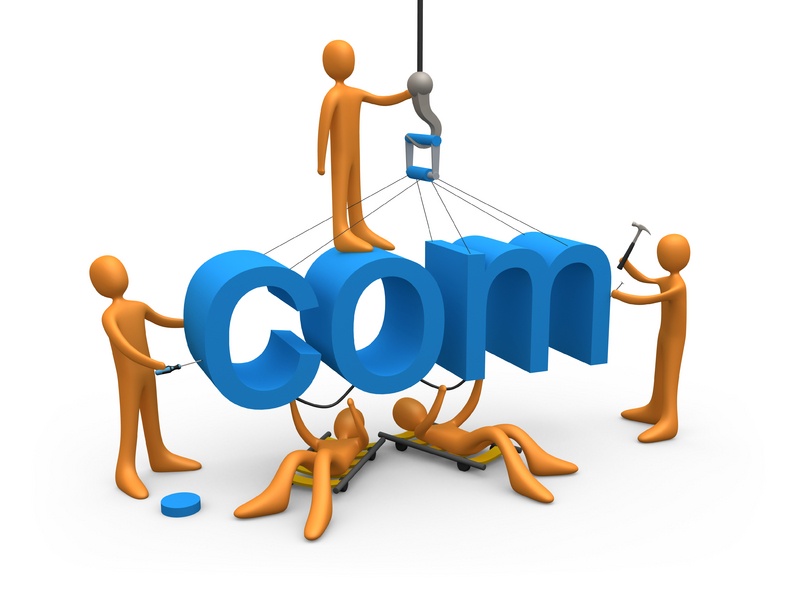
by Francois Muscat | Aug 7, 2017 | Website Design
The foundation for any online business or content marketing campaign is website design. You need a great website that is easy to use, loads quickly and properly, functions optimally on all devices – from desktops to tablets to I-phone – and is ideally a web design that can be easily upgraded by your developer to function on, and with, whatever technology they cook up next.
So it’s all about cross-device functionality – or is it? Far from it! That is crucial, but it’s only one aspect of website design and of the customer experience that could make or break you. The following is by no means comprehensive – particularly in relation to complex platforms and large e-commerce sites, but it does cover a few of the most common and recurring mistakes.
Website customer experience mistakes online businesses keep making
- Not personalising content delivery when it is appropriate to do so – and would be expected. It shows you haven’t done your homework and you don’t really know who your customers are or what they want and need.
- Image heavy pages that load slowly, or sometimes not at all.
- Content sharing buttons your site visitors need to search for.
- Contact forms with no other alternative method of contact offered. This may be needed for very large or global online businesses, but if not – make yourself available. Show a human face.
- No way for site visitors to offer feedback on their user experience.
- Clumsy navigation and over-sensitive and overly complex drop-down menus. Technically, they might work perfectly, and you think they offer more, but if its hard work for the user, it might put them off browsing further through the site.
Some less common but still annoying customer experience No’s that still happen
- Allowing ads that get in the way of content and are hard to get rid of. It’s an instant turn off and makes your site look trashy. On mobile in particular, it’s an instant invitation to go elsewhere.
- Landing pages for Adwords that don’t deliver the right content straight up.
- Poor or repetitive content that has been SEO’d to the hilt to get traffic but only offers an approximation of what your targeted site visitors are looking for. Enjoy the click-through while it lasts…
Contact us today for more information on how we can help you design or redesign your website for optimal customer experience, effective SEO (search engine optimisation) and maximised content marketing.

by Francois Muscat | May 24, 2017 | Website Design
As a small business, a gorgeous website design is one of your strongest tools when it comes to succeeding in the world of digital marketing. Here are helpful tips from the team at WSI OMS for improving your game and decreasing your bounce rate:
-
Don’t Worry Too Much about Code
While a highly intricate and over-developed website sounds like the stuff that dreams are made of, it often isn’t a viable option for smaller businesses that need to keep a closer eye on how they spend their budgets. This isn’t necessarily a bad thing though. Remember, custom-made websites consists of custom coding. This, in turn, requires a lot more maintenance than a slightly simpler, more affordable alternative. DIY sites are also an option to consider!
-
Make Sure Your SEO is on Point
SEO is what will help to keep your organic rankings in good health when pay per click advertising isn’t an option. SEO and web design go hand in hand, so, be sure to optimise your URLs, add your alt tags, include H tags and, of course, don’t forget about the importance of both internal and external link building! Social media marketing and content marketing also help to contribute quite heartily to your search engine optimisation efforts.
-
Embed a Blog in Your Website
As we just mentioned, content marketing is great for SEO, and what better place in which to house your best pieces than on your website itself? Remember to promote your blogs on your social media pages to start encouraging engagement!
If you own a business and are looking for professional website design services that won’t cost you the earth, WSI OMS is the company to turn to. Contact us today for more information on how we can help you.

by Francois Muscat | May 17, 2017 | Website Design
While most business owners look at web design from a purely visual point of view, the truth is that there is plenty that you can do in terms of the overall design of your website in an effort to help boost your SEO. Here are a few ways in which to get started:
Your images play a big role when it comes to keeping website visitors interested – and they can also play a big role when it comes to impressing Google and keeping search rankings high. Make sure that your images are optimised by including alt tags and using keywords wherever possible. Also, remember to keep images as low res as possible without affecting their quality: slow-loading images are sure to have a negative impact on your SEO.
Using keywords in your URLs, as well as in your image alt tags, will help to make Google’s job that much easier. You can also include locations in your URLs to assist in obtaining higher rankings for location-based searches.
-
Making Your Website Mobile-Friendly
This is likely the web design tweak that is sure to have the biggest impact on your search engine optimisation and rankings. Google has put a firm emphasis on the importance of having a device responsive website and is sure to favour your website if you have taken their guidance seriously.
If you are keen to enhance the quality of your web design and SEO efforts, it is time to get in touch with the team at WSI OMS. We specialise in all things digital marketing related. You can count on us to help your business reach its online marketing goals.

by Marelise da Silva | May 11, 2017 | Website Design
At the end of the day, if your website design isn’t quite up to scratch, all that money that you are spending on content marketing and SEO is in vain. Here are 6 ways in which your web design could be hurting your business, as well as a few tips for making some much-needed improvements going forward:
- Using Splash Pages
It doesn’t matter how well your splash page has been designed – it is for sure increasing your website bounce rate quite dramatically indeed. We recommend sticking to a conventional home page so that your visitors can find exactly what they are looking for as quickly as possible. If you feel that you must get an important message across, use a pop-up window instead.
- Not Including a Search Box
Once again, a website sans search box leads to a higher bounce rate because visitors are finding it challenging to find what they’re looking for. Installing a simple search box can make all the difference – and don’t forget to keep all navigation options as straightforward as possible!
- Not Linking Your Logo
If clicked on, your logo should take visitors to your home page. This is now an expectation and an essential part of any successful web design.
- Using Too Many High-Res Images
It is obvious that instant gratification is the trend here. Not many visitors are going to wait 30 or even 20 seconds for your web page to load. So, make sure that you keep loading times to a minimum by using fewer high-res images and by incorporating skeleton page loading screens into your design.
- Using Stock Images
Stock images are very useful and can work just fine if selected with care. However, if they look obviously fake or generic, they won’t do your website any favours. Take your own authentic photos wherever possible: it creates a better first impression.
- Not Optimising for All Browsers
So, your website design looks amazing on Firefox – but what about when opened using Chrome or Internet Explorer? Make sure that you check for cross-browser compatibility or you could lose out on many visitors and conversions this way!
Need help perfecting your website design? Perhaps you need a digital marketing company to assist you with search engine optimisation? Whatever your digital marketing needs may be, WSI OMS is always the company to contact. Call us today for more information on how we can help you.

by Francois Muscat | Feb 27, 2017 | Website Design
While doorway pages used to be a beneficial aspect of SEO marketing and web design, Google announced in 2015 that it was officially ‘closing the door’ on them. Thanks to the rise of content marketing, doorway pages have become irrelevant and detrimental to a website’s rankings. Below, we take a look at what doorway pages actually are, and why it is so important that you remove them from your web design as quickly as possible.
What are doorway pages?
Doorway pages, also commonly known as gateway pages, are web pages that have been created specifically for search engines. They are very easy to index and have been designed to help a website to rank for a specific keyword or keyword phrase. Ultimately, they were originally used to generate traffic to a website.
Why they’re bad
Google has begun to view doorway pages as a sneaky ‘Black Hat’ SEO technique and, as a result, has started penalizing websites, by lowering the website’s rankings, that make use of them. At the end of the day, while doorway pages might have benefited your business in the past, with Google making this judgment call, they will only do it harm in the future. The best way that you can ensure that you improve the traffic to your website and grow your following is by embracing the new world of content marketing and populating your website with user-friendly, helpful content relating to your business and its offering.
For more information on getting rid of doorway pages and maximizing your company’s web design, do not hesitate to get in touch with the expert team at WSI OMS.

by Marelise da Silva | Feb 9, 2017 | Website Design
February is an odd little month: it has neither 30 nor 31 days in it, it is often associated with love because Valentine’s Day falls in it. For many, it heralds financial year-end – anything but lovely! Drawing on this dichotomy, let’s look at “love” and “loathes” in the world of website design.
Website loathes
1.) Links that do not work give a careless and unprofessional impression: not only of your website but your organization. On top of which, if there is a link, there must be a reason for it and you do not want to miss the opportunity to share whatever the link leads to.
2.) Flashing graphics luckily seemed to have died a natural death. However, there are some who still insist on adding some pizazz with unnecessary animations. A well-designed website does not need such gimmicks.
3.) Click to enter websites should only be used a safety step is required for legal reasons (such as alcohol and gambling sites). Otherwise, it is a waste of your readers’ time, as they have clearly already selected your website.
Website loves
1.) A clean website design that is simple to navigate and easy on the eye is a sure way to direct your audience to the appropriate call to action.
2.) Brevity in the body of your web copy is sure to win readers over. A lengthy copy is more inclined to scare your readers away, while bite-sized chunks of information are easily consumed.
3.) Quick-loading elements within your website are essential. People are more impatient than ever and no matter how wonderful your video or imagery may be, no-one will see it if it takes too long to load.
In the dynamic space of the online world, change is the only constant. For assistance with the latest web design trends on your website and more, get in touch with the leading global Internet marketing franchise.






